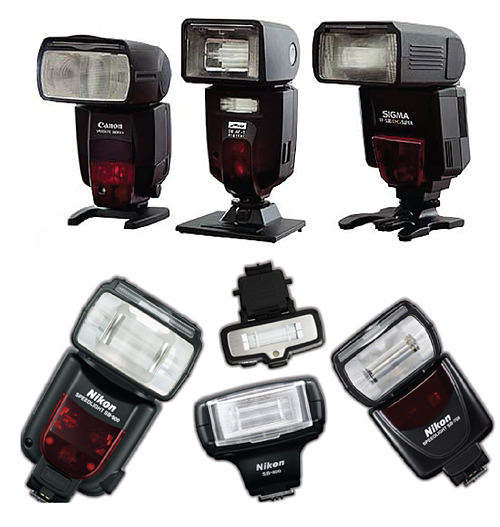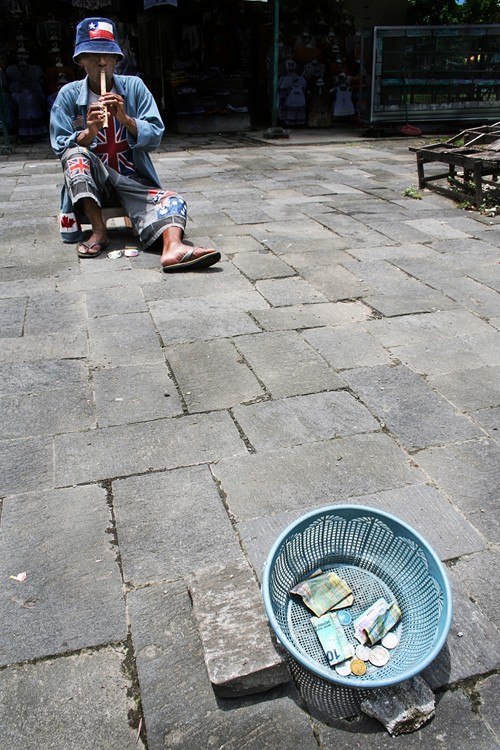
A flash is pretty much a must-have accessory for a photographer. Because photography itself, “Photos-graphein” literally means drawing with light. Without light, there’d be no pictures.
Buying a new flash of course isn’t a problem because buying something new doesn’t require the need to for detail checking of its condition. Plus, it usually includes warranty. But what about when we’re planning on buying a used flash, with an expired warranty? What are the main things we should check for in order to determine it’s in good working condition or not?
The following are a few things you should do before you buy a used flash:
– Don’t buy a flash without trying it out first.
Buying used merchandise only via sites like eBay could be an alternative because it’s usually offered at a cheap price, but it’s still best to physically check the flash before a buy. But then you can be more confident with the buy if you personally know the seller, if the seller has a good reputation, or if the seller offers a warranty with the sell.
– Cek the Flash’s Physical Condition
Check whether the physical condition of the flash body is still great or if there are any defects/ scratches/ cracks etc.
– Download the Manual
Down the e-manual of the exact type of flash you’re about to buy if the manual isn’t included in the buy. This manual helps you in knowing in detail the features the flash has and all the buttons it has in its body. With that knowledge in mind, you’ll know which features to tests and what you need to do to be sure that the flash is working properly.
– Check the battery and cable sync sockets
Check for any corrosions or spots such as residue of battery leakage in the battery socket. Things like these can cause electrical surge and damage flash performance.

– Check the lamp
Check whether or not the flash lamp is still in normal working condition. Usually, a flash has a “Test” button that’ll ignite the flash without having to be attached to a camera body.
– Check whether or not the glass layer is fried
Examine the glass layer in front of the flash lamp. Check for any yellowish stains on its surface. This is a burn residue. If you see any, chances are the flash has passed its prime or the flash lamp’s been burnt out before. A good flash is a flash with a translucent white glass layer.
– Check the Recycle time
The recycle time is the time it takes for a flash to recharge its power from an inactive state to a state ready to be used. Check whether or not the flash has normal recycle times. Check normal standard recycle time in the manual or internet references. If the recycle time between ready states of a flash is too long, then most likely the capacitor component is past its prime.
– Power output
Check the power output of the flash, starting from the lowest power setting to the highest. A defective flash usually is stuck in a certain power setting. For instance, it may only ignite in full power or in its lowest power setting.

– Check the bounce card and diffuser
Some flashes are equipped with a bounce card and diffuser that’s tucked into the head of the flash. Check whether or not they’re still in tact.

– Test the flash while mounted on a camera body
Test the flash by mounting it onto a camera body. If the flash you’re planning to buy is a TTL (Through The Lens), make sure the TTL functions normally. A normal-working TTL flash will automatically adjust its power output settings to accommodate with the light meter and camera lens. When the flash is mounted, it can also usually be set via the menu settings in the camera body. Test if all these are working properly or not.
– Check the zoom head
The zoom head is the part that moves back and forth (zooms) in a flash that functions to adjust the reflector inside the flash. This zoom head moves according to the zoom of the lens. Try to zoom your camera lens in and out. If the zoom head follows the zoom of the lens, then the flash is working properly.
– Test the AF assist (if that’s one of its features)
High-end flashes are usually equipped with an AF assist light. That’s a tiny light that assists in finding the accurate focus when photographing in low lighting. This AF assist is usually red-colored.

– Test the wireless IR functions (if that’s one of its features)
High-end flashes also usually has the wireless IR function. This is where a flash is triggered via a transmitter on a camera or a wireless transmitter; such as the ST-E2 (Canon) or the WT-4A (Nikon).
– Test the optical sensor (if that’s one of its features)
Some flashes have the optical sensor/ light sensor built in. An optical sensor is a light sensor in a flash that triggers the flash if the flash receives light. Optical sensors only work properly in an indoor setting.
Recommended Product:
















